AMD Lists Ryzen Raven Ridge Desktop APU Details
AMD's pre-CES news bonanza included some basic Raven Ridge APU specifications, along with some detailed performance projections, but now the company has listed more details on its site. The new APUs come bearing the Zen architecture paired with Vega graphics cores and feature some of the enhancements we'll see with the Zen+ processors, such as the improved Precision Boost 2.
AMD Raven Ridge Desktop APUs
| Header Cell - Column 0 | Ryzen 5 2400G With Radeon RX Vega 11 Graphics | Ryzen 3 2200G With Radeon Vega 8 Graphics |
|---|---|---|
| Cores Threads | 4/8 | 4 / 4 |
| Base Clock (GHz) | 3.5 | 3.6 |
| Max Boost Clock (GHz) | 3.9 | 3.7 |
| Graphics Compute Units | 11 | 8 |
| Stream Processors | 704 | 512 |
| Max GPU Clock (MHz) | 1250 | 1100 |
| L2/L3 Cache (MB) | 6 | 6 |
| Memory Speed | DDR4-2933 | DDR4-2933 |
| Memory Channels | Dual Channel | Dual Channel |
| TDP | 65W | 65W |
| cTDP (Watts) | 45-65W | 45-65W |
| Price | $169 | $99 |
The Raven Ridge processors support DDR4-2933, which is a nice upgrade over the Ryzen family's typical DDR4-2666 support. The Raven Ridge processors use the Infinity Fabric to connect the single four-core CCX (Core Complex) and the Vega graphics cores, and as we've seen demonstrated time and again, increasing the memory frequency also improves the Infinity Fabric's frequency. That leads to improved performance in gaming, which is a good fit for a processor that features Vega graphics cores. We also expect other improvements from design tweaks, which might include the lower L2 and L3 latency that we measured with the Threadripper processors.
The APUs drop into existing AM4 motherboards and the integrated Vega graphics will use the display outputs. AMD also demonstrated overclocking both the CPU and GPU during its pre-CES event, so there is room for tuning. The bundled Wraith Stealth cooler should also provide room for overclocking the 65W processors.
The listing also included base frequencies. The 4C/8T Ryzen 5 2400G comes with a default 65W TDP ceiling and a 3.5GHz base frequency that clocks up to 3.9GHz. The 4C/4T Ryzen 3 2200G steps back to a 3.6GHz base and 3.7GHz boost clock.
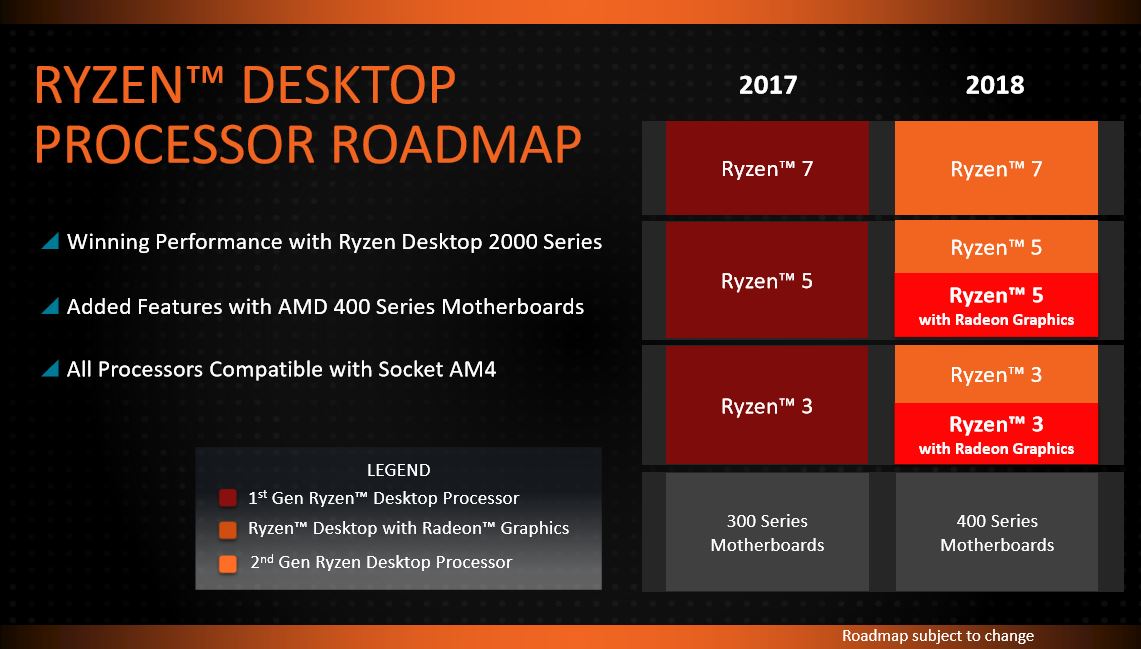

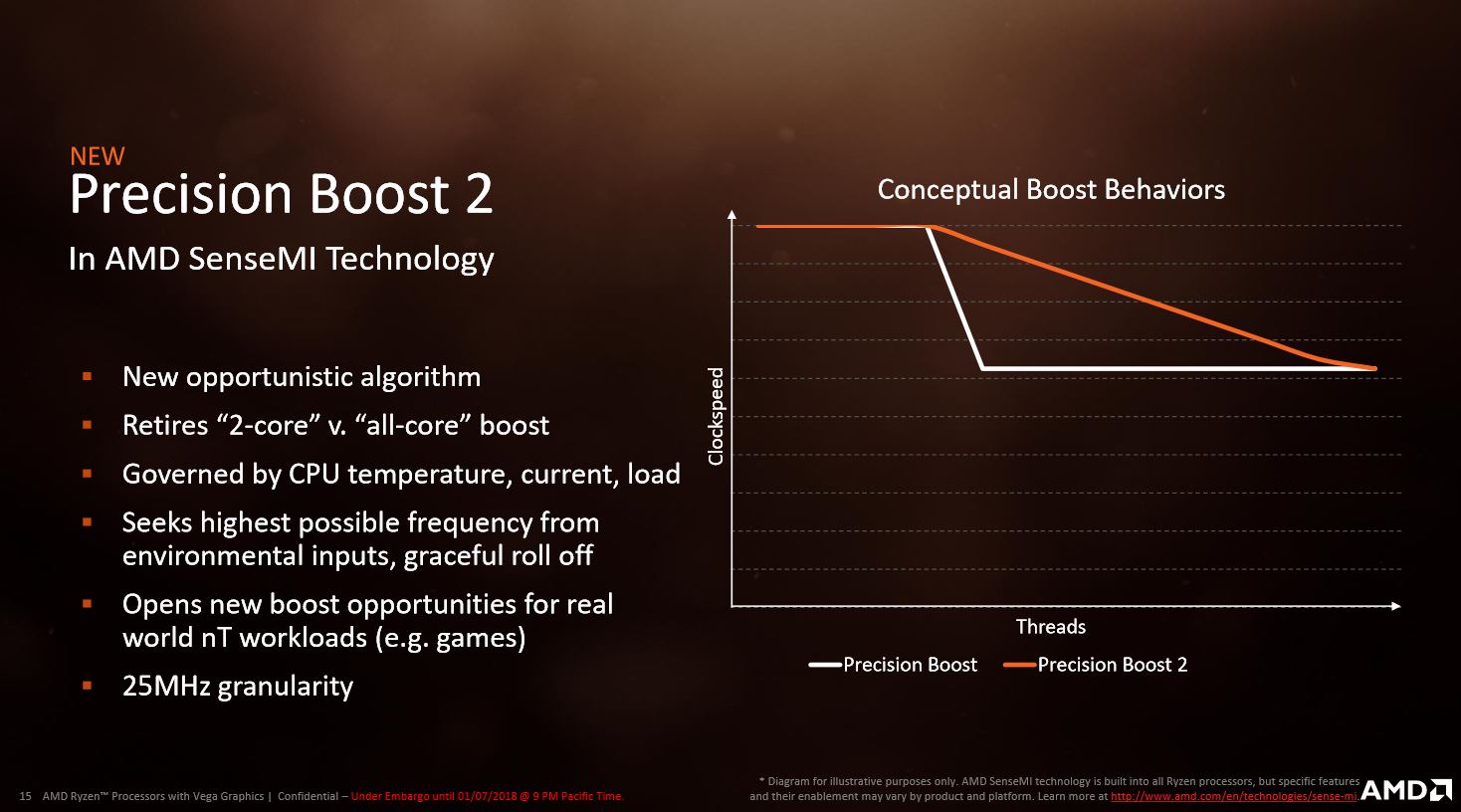
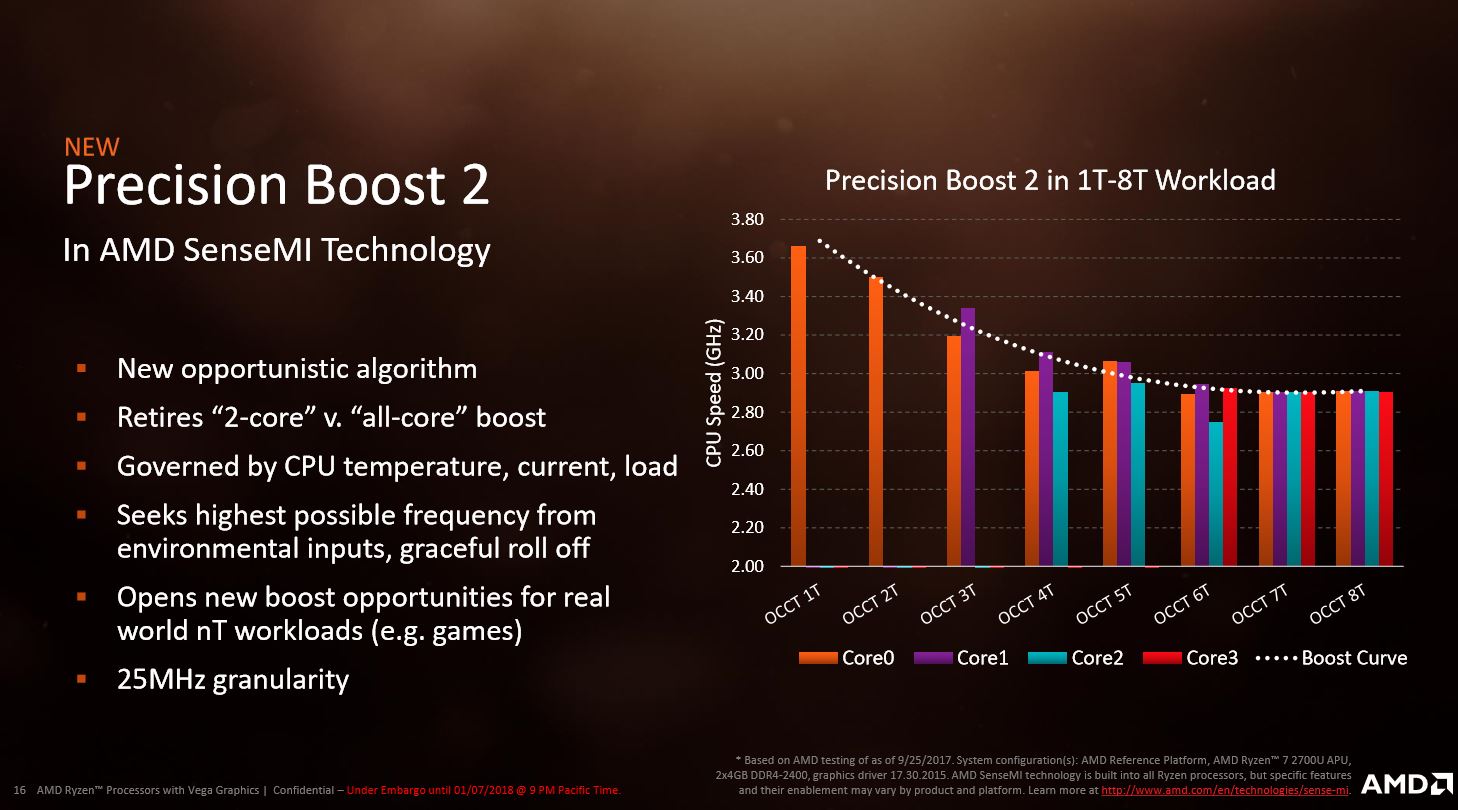
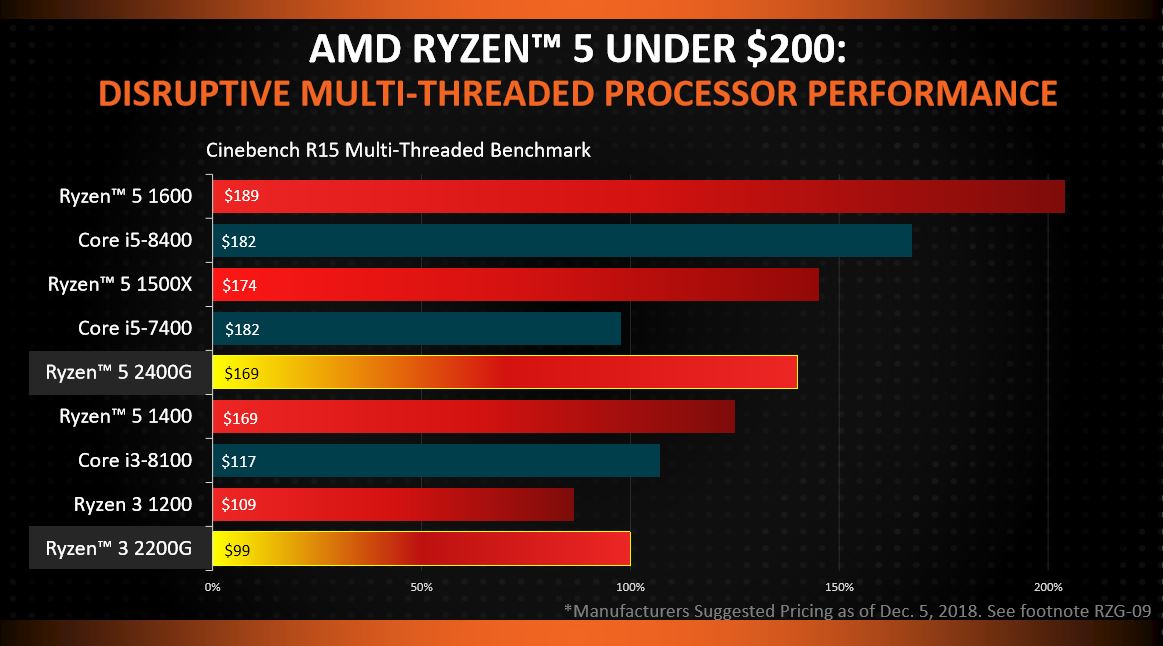
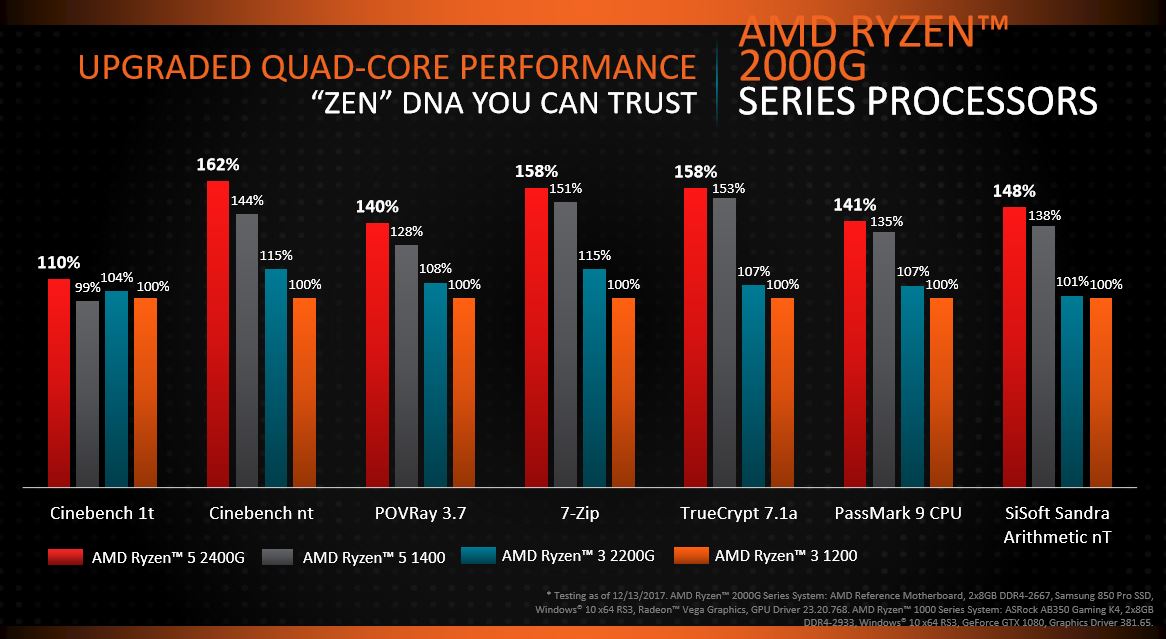
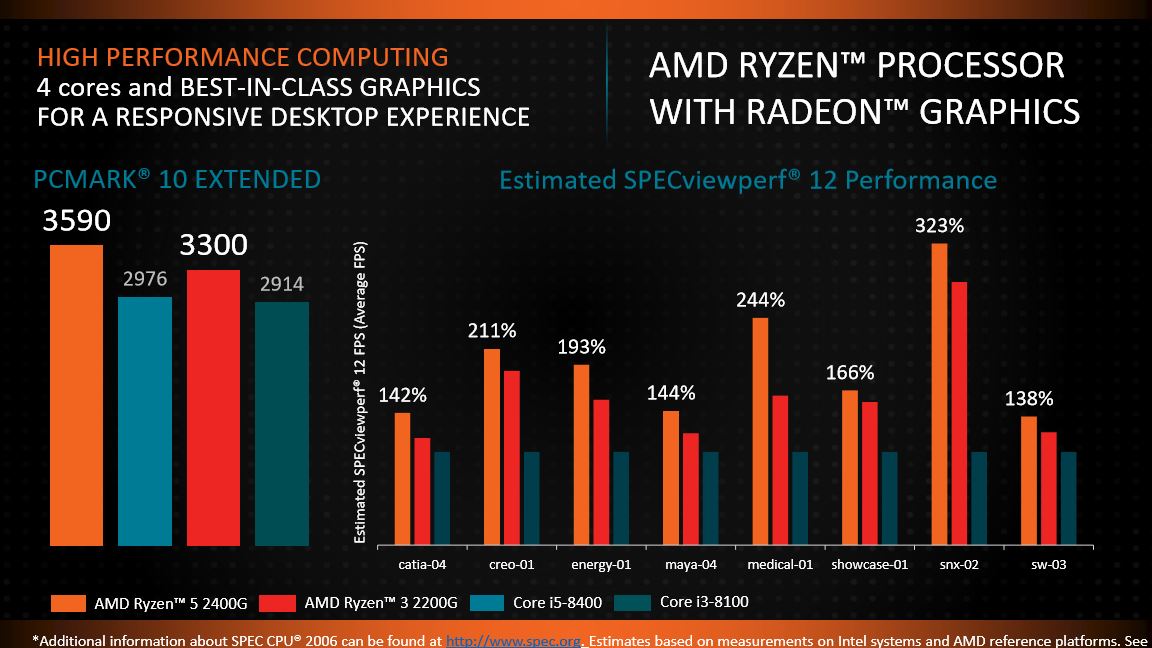
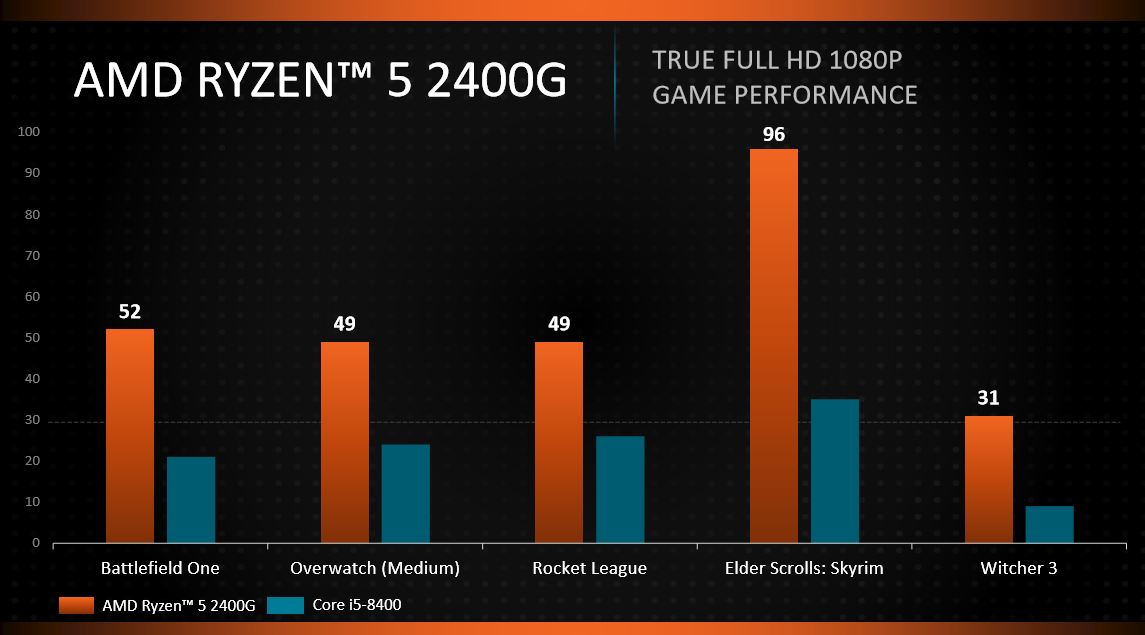
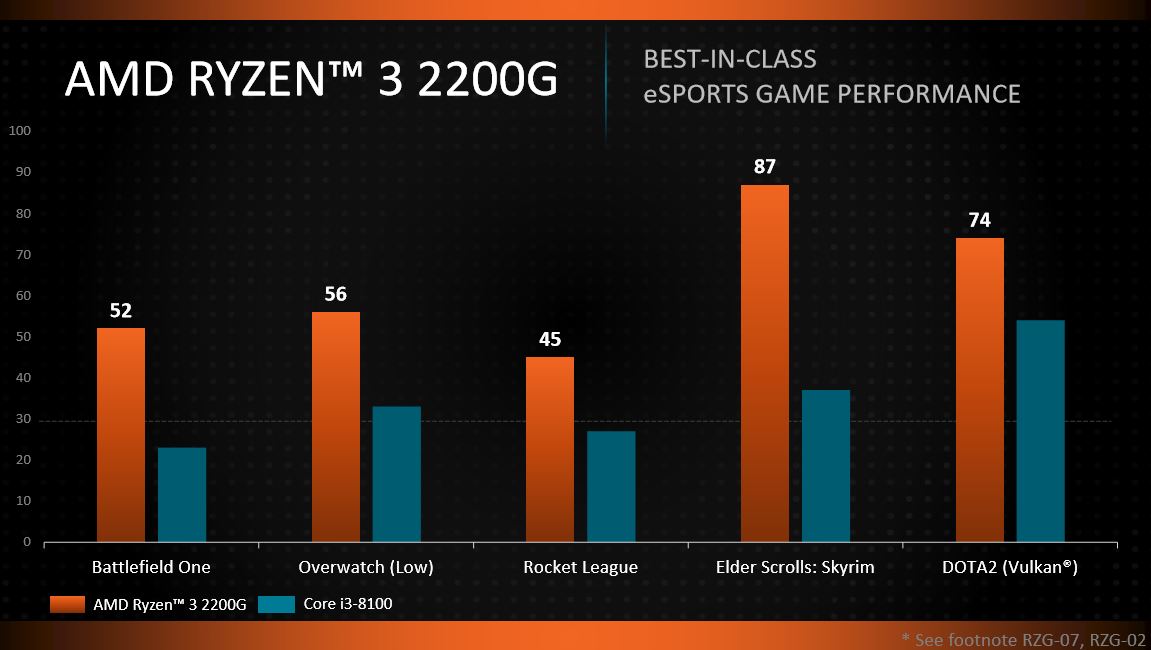
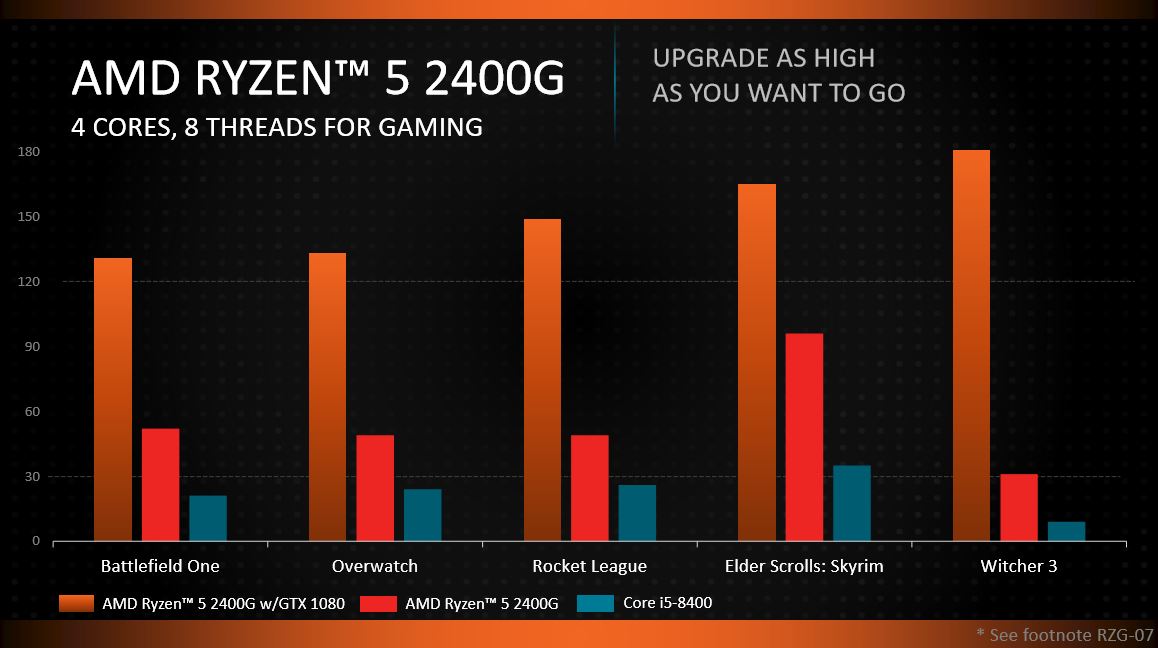

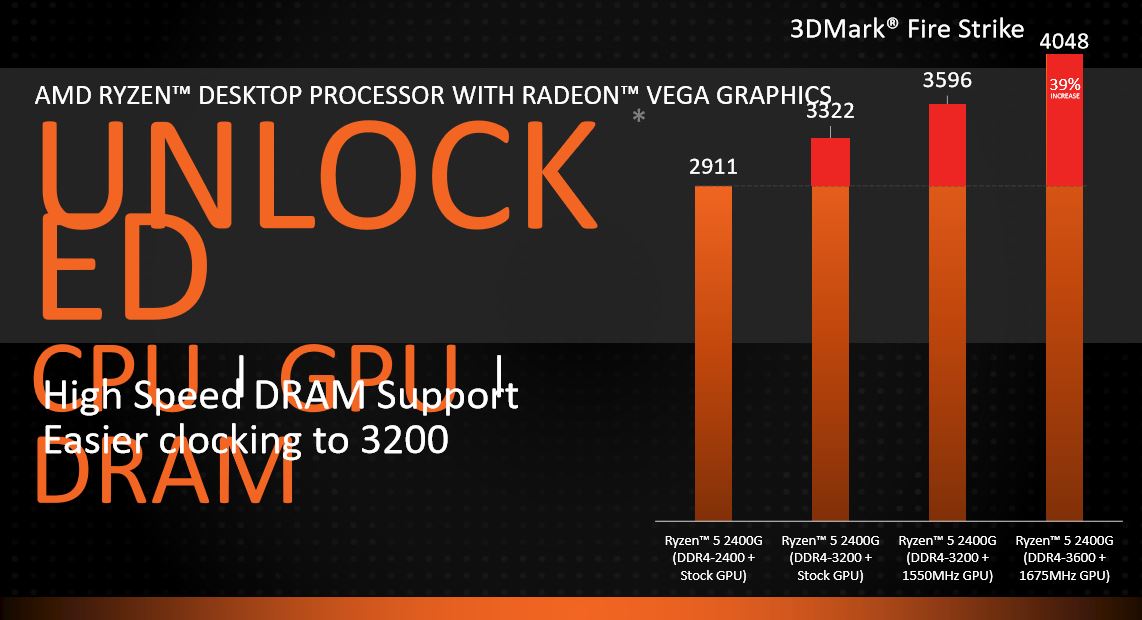
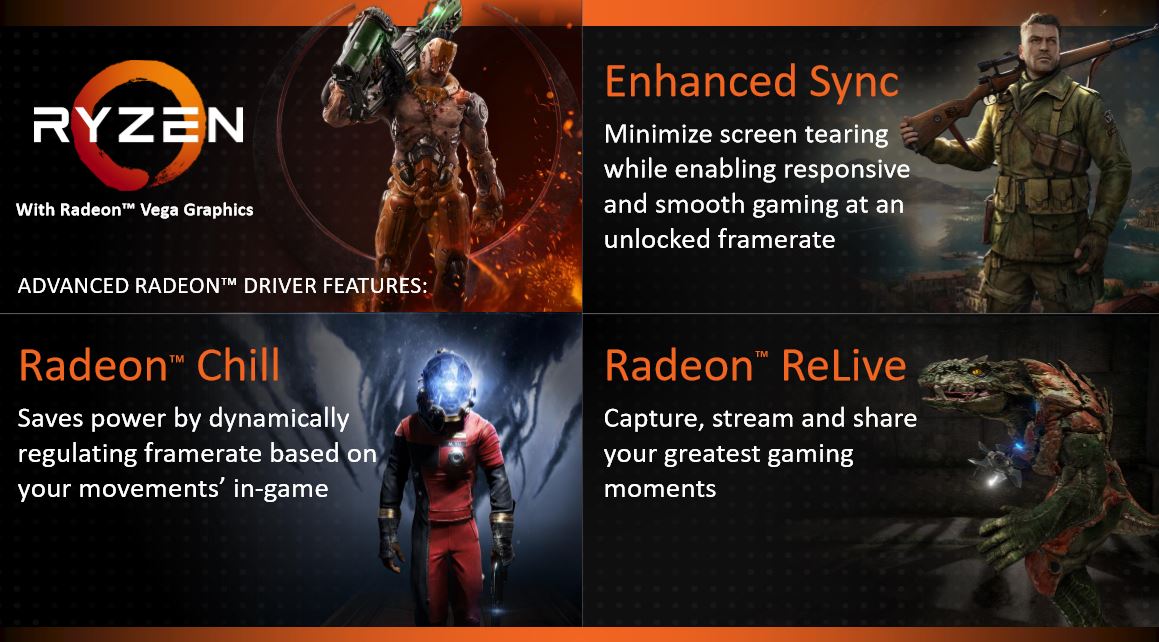
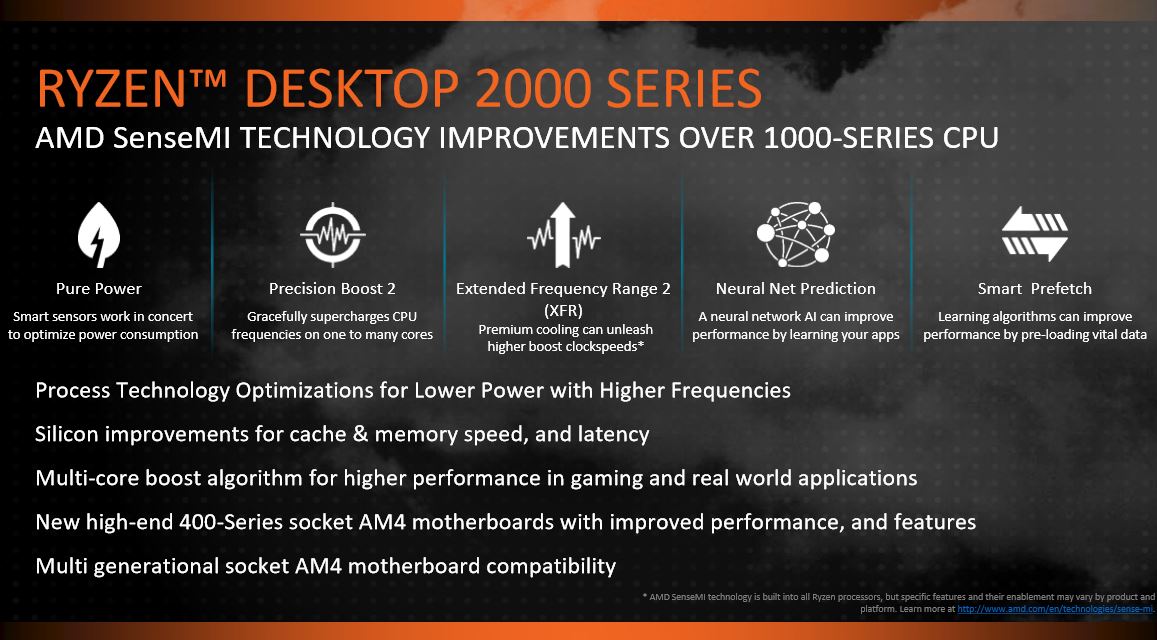
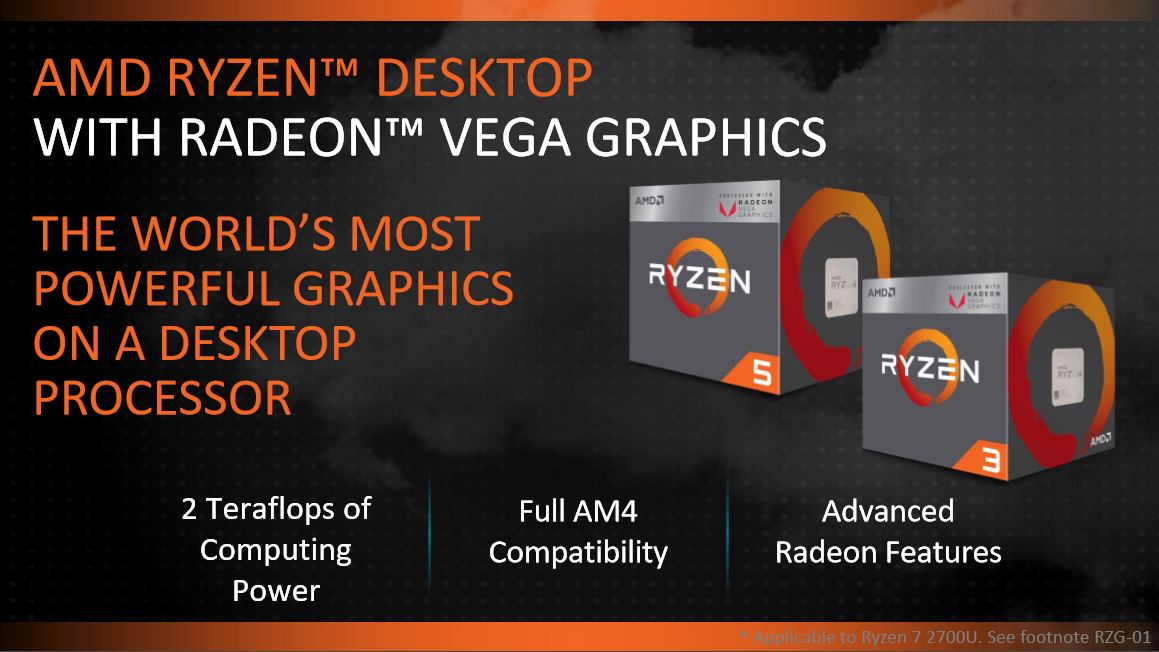
AMD is also upgrading the APUs with Precision Boost 2, which should improve performance in multi-threaded workloads. AMD's current-gen Ryzen processors provide only dual-core and all-core boost frequencies, but the new Precision Boost 2 algorithms include a more sophisticated set of boost frequencies that operate based on the number of active threads. The feature now scales from one to eight active threads, which will help capitalize on Ryzen's already strong multi-threaded performance. AMD has not provided a complete listing of the multi-core boost frequencies yet.
AMD also treated us to some performance projections during the CES event, which we've included in the album above. AMD's benchmark results are impressive against Intel's notoriously slow integrated graphics. As always, we recommend that you wait until there are third-party reviews. AMD has publicly announced the processors will launch on Feb 12, so you probably won't have to wait for long.
Get Tom's Hardware's best news and in-depth reviews, straight to your inbox.

Paul Alcorn is the Editor-in-Chief for Tom's Hardware US. He also writes news and reviews on CPUs, storage, and enterprise hardware.
-
captaincharisma i don't see any mention of these APU's having their own dedicated video memory so if that is the case then they shouldn't perform that much better then previous APU graphics cores.Reply -
Co BIY RGRIGIO 22 minutes agoReply
Hmm... Should i expect any of these IGPUs to perform better than an old HD6770 Gddr5?
Based on the GPU hierarchy table. Yes, but by a small amaount. -
rgrigio Reply20622904 said:RGRIGIO 22 minutes ago
Hmm... Should i expect any of these IGPUs to perform better than an old HD6770 Gddr5?
Based on the GPU hierarchy table. Yes, but by a small amaount.
That would be nice. My brother needs an upgrade for his overclocked coal burning L5420/HD6770 ASAP.
Will wait for benches with crossed fingers. -
InvalidError Reply
The 2400G would be $200+ if it had any amount of HBM on it. Also, the 2700U on the mobile side of things is already burying all past IGPs using system DDR4.20622874 said:i don't see any mention of these APU's having their own dedicated video memory so if that is the case then they shouldn't perform that much better then previous APU graphics cores.
I'm not convinced it would be physically possible or practical to cram an HBM chip within the AM4 footprint as that would put the CPU die grossly off-center. If AMD wants to do multi-chip packages for mainstream, it'll likely need a more rectangular socket footprint, which means CPUs with HBM as L4 cache or IGP memory probably won't happen until AM5. -
madmatt30 ^ agreed - in all fairness the i3 8100 is fine & dandy for htpc use too & a good pricepoint - but the cheapest matx board at oresent is $120 or so.Reply
You can drop that ryzen on a $40 a320 board & you're good to go for a lot less money. -
spdragoo Reply20622823 said:Hmm... Should i expect any of these IGPUs to perform better than an old HD6770 Gddr5?
Probably, yeah. Sure, it's a cut-down Vega, but it seems to have slightly better computing power than the 6770, plus it's compatible with newer versions of OpenCL (v2.2. instead of v1.2), OpenGL (v4.5 instead v4.4), Shader Model (v6.0 instead of 5.0), DirectX (Direct3D v12.0 instead of v11.0), plus support for Vulkan & SPIR-V.
20622823 said:Hmm... Should i expect any of these IGPUs to perform better than an old HD6770 Gddr5?
20622874 said:i don't see any mention of these APU's having their own dedicated video memory so if that is the case then they shouldn't perform that much better then previous APU graphics cores.
I highly doubt that. The prior desktop APUs, even the ones using the Socket AM4 platform, were 2C/4T Excavator-based CPUs (i.e. slightly improved Steamroller chips akin to the old FX line) using R7 onboard graphics (i.e. R7 250/350). So you're getting a much better base CPU (the 2400G being roughly comparable to the R5 1500X/1500 Pro, the 2200G essentially is the R3 1300X/1300 Pro), with access to faster RAM, & a better graphics package. Barring something being severely gimped on the driver side or chipset, you're talking about having an APU that on the graphics side is probably at least comparable to the GT 1030 (& could potentially maybe even match up to the GTX 1050/1050TI or RX 560), with a very decent Ryzen CPU. -
shafe88 I want to see some benchmarks comparing these APU's to i3's and i5's that are paired with GTX 750's and 1050"s. Also would be nice to see these APU's paired with GTX 750's and 1050's during the benchmarks.Reply -
madmatt30 ^ Im sure you'll see those comparitive benches on release.Reply
There really isnt a need though imo , they're to all intents a ryxen 1300x & a 1500x with an igp
We pretty much know the results already.
They're not going to match Intel paired with a half decent gpu at all using just the igp - at the very best with very fast ram thats rx550 performance youre looking at.